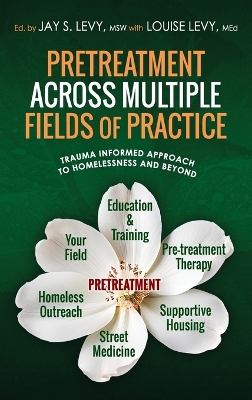Poverty and Power
 portes grátis
portes grátis
Poverty and Power
The Problem of Structural Inequality
Royce, Edward
Rowman & Littlefield
07/2022
308
Dura
Inglês
9781538167557
15 a 20 dias
Descrição não disponível.
Brief Contents
Acknowledgments
Preface
1. Poverty as a Social Problem
Part I: Individualistic Theories of Poverty and Inequality
2. The Biogenetic Theory of Poverty and Inequality
3. The Cultural Theory of Poverty and Inequality
4. The Human Capital Theory of Poverty and Inequality
Part II: A Structural Perspective on Poverty-Four Systems
5. The Economic System and Poverty
6. The Political System and Poverty
7. The Cultural System and Poverty
8. The Social System and Poverty
Part III: A Structural Perspective on Poverty-Ten Obstacles
9. Structural Obstacles and the Persistence of Poverty (Part I)
10. Structural Obstacles and the Persistence of Poverty (Part II)
11. Conclusion
Appendix 1
Appendix 2
Notes
Selected Bibliography
Index
About the Author
Acknowledgments
Preface
1. Poverty as a Social Problem
Part I: Individualistic Theories of Poverty and Inequality
2. The Biogenetic Theory of Poverty and Inequality
3. The Cultural Theory of Poverty and Inequality
4. The Human Capital Theory of Poverty and Inequality
Part II: A Structural Perspective on Poverty-Four Systems
5. The Economic System and Poverty
6. The Political System and Poverty
7. The Cultural System and Poverty
8. The Social System and Poverty
Part III: A Structural Perspective on Poverty-Ten Obstacles
9. Structural Obstacles and the Persistence of Poverty (Part I)
10. Structural Obstacles and the Persistence of Poverty (Part II)
11. Conclusion
Appendix 1
Appendix 2
Notes
Selected Bibliography
Index
About the Author
Este título pertence ao(s) assunto(s) indicados(s). Para ver outros títulos clique no assunto desejado.
affordability; African-American; American Dream; Bell curve; Biogenetic theory; Black Lives Matter; Black poverty; Causes of poverty; Child care; Child development centers; Child poverty; Collective bargaining; Consumerism; corporations; Criminal justice; discrimination; Early childhood education; Earned income tax credit; economic disparity; Economic inequality; economic insecurity; Economy; education; education funding; educational attainment; elder poverty and abuse; employment; equal opportunity; equality; eviction; felons; food insecurity; gender pay gap; geography of inequality; gerrymandering; globalization; graduation rates; great recession; health disparities; health risks; Hispanic discrimination; Housing and Urban Development (HUD); housing policy; housing shortage; Human capital theory; immigration reform; individualism; Inequality; intelligence quotient (IQ); investment and investing; investment capital; labor market; Latinx discrimination; media and poverty; media bias; neoliberalism; organized labor; Pension plans; personal responsibility; poor people; poverty; public assistance; public transportation; redlining; Retirement savings; segregation; single mothers; small business; social justice; social networks; Standardizes tests in education; tax cuts; Unemployment; Unions; victim blaming; voting access; voting disenfranchisement; voting rights; Wage decline; Wage growth; Wealth; welfare; worker retraining; workforce training
Brief Contents
Acknowledgments
Preface
1. Poverty as a Social Problem
Part I: Individualistic Theories of Poverty and Inequality
2. The Biogenetic Theory of Poverty and Inequality
3. The Cultural Theory of Poverty and Inequality
4. The Human Capital Theory of Poverty and Inequality
Part II: A Structural Perspective on Poverty-Four Systems
5. The Economic System and Poverty
6. The Political System and Poverty
7. The Cultural System and Poverty
8. The Social System and Poverty
Part III: A Structural Perspective on Poverty-Ten Obstacles
9. Structural Obstacles and the Persistence of Poverty (Part I)
10. Structural Obstacles and the Persistence of Poverty (Part II)
11. Conclusion
Appendix 1
Appendix 2
Notes
Selected Bibliography
Index
About the Author
Acknowledgments
Preface
1. Poverty as a Social Problem
Part I: Individualistic Theories of Poverty and Inequality
2. The Biogenetic Theory of Poverty and Inequality
3. The Cultural Theory of Poverty and Inequality
4. The Human Capital Theory of Poverty and Inequality
Part II: A Structural Perspective on Poverty-Four Systems
5. The Economic System and Poverty
6. The Political System and Poverty
7. The Cultural System and Poverty
8. The Social System and Poverty
Part III: A Structural Perspective on Poverty-Ten Obstacles
9. Structural Obstacles and the Persistence of Poverty (Part I)
10. Structural Obstacles and the Persistence of Poverty (Part II)
11. Conclusion
Appendix 1
Appendix 2
Notes
Selected Bibliography
Index
About the Author
Este título pertence ao(s) assunto(s) indicados(s). Para ver outros títulos clique no assunto desejado.
affordability; African-American; American Dream; Bell curve; Biogenetic theory; Black Lives Matter; Black poverty; Causes of poverty; Child care; Child development centers; Child poverty; Collective bargaining; Consumerism; corporations; Criminal justice; discrimination; Early childhood education; Earned income tax credit; economic disparity; Economic inequality; economic insecurity; Economy; education; education funding; educational attainment; elder poverty and abuse; employment; equal opportunity; equality; eviction; felons; food insecurity; gender pay gap; geography of inequality; gerrymandering; globalization; graduation rates; great recession; health disparities; health risks; Hispanic discrimination; Housing and Urban Development (HUD); housing policy; housing shortage; Human capital theory; immigration reform; individualism; Inequality; intelligence quotient (IQ); investment and investing; investment capital; labor market; Latinx discrimination; media and poverty; media bias; neoliberalism; organized labor; Pension plans; personal responsibility; poor people; poverty; public assistance; public transportation; redlining; Retirement savings; segregation; single mothers; small business; social justice; social networks; Standardizes tests in education; tax cuts; Unemployment; Unions; victim blaming; voting access; voting disenfranchisement; voting rights; Wage decline; Wage growth; Wealth; welfare; worker retraining; workforce training







